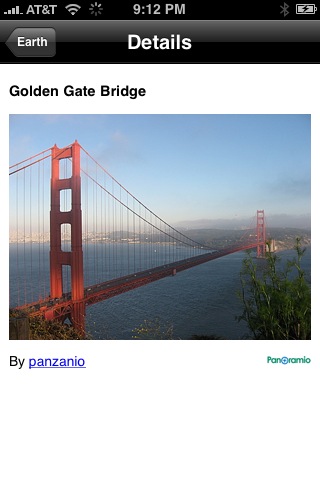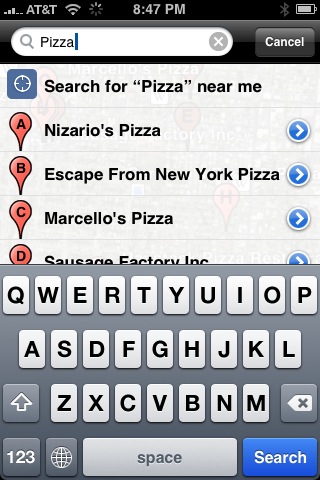Copyright Accord Would Make Millions More Books Available Online
NEW YORK, NY (October 28, 2008) – The Authors Guild, the Association of American Publishers (AAP), and Google today announced a groundbreaking settlement agreement on behalf of a broad class of authors and publishers worldwide that would expand online access to millions of in-copyright books and other written materials in the U.S. from the collections of a number of major U.S. libraries participating in Google Book Search. The agreement, reached after two years of negotiations, would resolve a class-action lawsuit brought by book authors and the Authors Guild, as well as a separate lawsuit filed by five large publishers as representatives of the AAP’s membership. The class action is subject to approval by the U.S. District Court for the Southern District of New York.
The agreement promises to benefit readers and researchers, and enhance the ability of authors and publishers to distribute their content in digital form, by significantly expanding online access to works through Google Book Search, an ambitious effort to make millions of books searchable via the Web. The agreement acknowledges the rights and interests of copyright owners, provides an efficient means for them to control how their intellectual property is accessed online and enables them to receive compensation for online access to their works.
If approved by the court, the agreement would provide:
- More Access to Out-of-Print Books – Generating greater exposure for millions of in-copyright works, including hard-to-find out-of-print books, by enabling readers in the U.S. to search these works and preview them online;
- Additional Ways to Purchase Copyrighted Books – Building off publishers’ and authors’ current efforts and further expanding the electronic market for copyrighted books in the U.S., by offering users the ability to purchase online access to many in-copyright books;
- Institutional Subscriptions to Millions of Books Online – Offering a means for U.S. colleges, universities and other organizations to obtain subscriptions for online access to collections from some of the world’s most renowned libraries;
- Free Access From U.S. Libraries – Providing free, full-text, online viewing of millions of out-of-print books at designated computers in U.S. public and university libraries; and
- Compensation to Authors and Publishers and Control Over Access to Their Works – Distributing payments earned from online access provided by Google and, prospectively, from similar programs that may be established by other providers, through a newly created independent, not-for-profit Book Rights Registry that will also locate rightsholders, collect and maintain accurate rightsholder information, and provide a way for rightsholders to request inclusion in or exclusion from the project.
Under the agreement, Google will make payments totaling $125 million. The money will be used to establish the Book Rights Registry, to resolve existing claims by authors and publishers and to cover legal fees. The settlement agreement resolves Authors Guild v. Google, a class-action suit filed on September 20, 2005 by the Authors Guild and certain authors, and a suit filed on October 19, 2005 by five major publisher-members of the Association of American Publishers: The McGraw-Hill Companies, Inc. (NYSE: MHP); Pearson Education, Inc. and Penguin Group (USA) Inc., both part of Pearson (LSE: PSON; NYSE: PSO); John Wiley & Sons, Inc. (NYSE: JWa and JWb); and Simon & Schuster, Inc. part of CBS Corporation (NYSE: CBS.A and CBS). These lawsuits challenged Google’s plan to digitize, search and show snippets of in-copyright books and to share digital copies with libraries without the explicit permission of the copyright owner.
Holders worldwide of U.S. copyrights can register their works with the Book Rights Registry and receive compensation from institutional subscriptions, book sales, ad revenues and other possible revenue models, as well as a cash payment if their works have already been digitized.
Libraries at the Universities of California, Michigan, Wisconsin, and Stanford have provided input into the settlement and expect to participate in the project, including by making their collections available. Along with a number of other U.S. libraries that currently work with Google, their significant efforts to preserve, maintain and provide access to books have played a critical role in achieving this agreement and, through their anticipated participation, they are furthering such efforts while making books even more accessible to students, researchers and readers in the U.S. It is expected that additional libraries in the U.S. will participate in this project in the future.
Google Book Search users in the United States will be able to enjoy and purchase the products and services offered under the project. Outside the United States, the users’ experience with Google Book Search will be unchanged, unless the offering of such products and services is authorized by the rightsholder of a book.
“It’s hard work writing a book, and even harder work getting paid for it,” said Roy Blount Jr., President of the Authors Guild. “As a reader and researcher, I’ll be delighted to stop by my local library to browse the stacks of some of the world’s great libraries. As an author, well, we appreciate payment when people use our work. This deal makes good sense.”
“This historic settlement is a win for everyone,” said Richard Sarnoff, Chairman of the Association of American Publishers. “From our perspective, the agreement creates an innovative framework for the use of copyrighted material in a rapidly digitizing world, serves readers by enabling broader access to a huge trove of hard-to-find books, and benefits the publishing community by establishing an attractive commercial model that offers both control and choice to the rightsholder.”
“Google’s mission is to organize the world’s information and make it universally accessible and useful. Today, together with the authors, publishers, and libraries, we have been able to make a great leap in this endeavor,” said Sergey Brin, co-founder & president of technology at Google. “While this agreement is a real win-win for all of us, the real victors are all the readers. The tremendous wealth of knowledge that lies within the books of the world will now be at their fingertips.”
For more information about this agreement, including information about whether you may be a class member, please visit books.google.com/booksrightsholders. Class members include authors (the Author Sub-Class) and publishers (the Publisher Sub-Class), and their heirs and successors, of books and other written works protected by U.S. copyright law.
A teleconference for the media will be held today, Tuesday, October 28, 2008, at 10:30 a.m. Eastern. To participate, reporters in the U.S. should dial 877-340-7913, and reporters internationally should dial 719-325-4845. Please tell the operator you would like to join the “Authors, Publishers and Google” call.
About the Authors Guild
The Authors Guild, representing more than 8,000 authors, is the nation’s largest and oldest society of published authors and the leading writers’ advocate for fair compensation, effective copyright protection, and free expression. For more information, visit www.authorsguild.org.
About the Association of American Publishers
The AAP is the national trade association of the U.S. book publishing industry. AAP’s more than 300 members include most of the major commercial publishers in the United States, as well as smaller and non-profit publishers, university presses and scholarly societies. AAP members publish hardcover and paperback books in every field, educational materials for the elementary, secondary, postsecondary, and professional markets, scholarly journals, computer software, and electronic products and services. The protection of intellectual property rights in all media, the defense of the freedom to read and the freedom to publish at home and abroad, and the promotion of reading and literacy are among the Association’s highest priorities. For further information, see www.publishers.org.
About Google Inc. and Google Book Search
Google’s innovative search technologies connect millions of people around the world with information every day. Google Book Search was launched in 2004, and today enables the full text searching of more than a million books online. More than 20,000 publishers and 28 libraries around the world currently work with Google to market their books through the service. Google is headquartered in Silicon Valley with offices throughout the Americas, Europe and Asia. For more information, visit www.google.com and books.google.com.
Contacts:
Authors Guild: Matthew Traub (matthew_traub@dkcnews.com) 212-981-5207, Joe DePlasco (joe_deplasco@dkcnews.com), 212-981-5125
Association of American Publishers: Judy Platt, jplatt@publishers.org, 202-220-4551
Google: Megan Lamb, press@google.com, 650-930-3555
The Author Sub-Class and the Authors Guild, Inc. are represented by Michael J. Boni and Joanne Zack of Boni & Zack LLC, Bala Cynwyd, PA, 610-822-0200, www.bonizack.com, bookclaims@bonizack.com.
The Publisher Sub-Class, the Association of American Publishers, Inc., The McGraw-Hill Companies, Inc., Pearson Education, Inc., Penguin Group (USA) Inc., John Wiley & Sons, Inc., and Simon & Schuster, Inc. are represented by Jeffrey P. Cunard and Bruce P. Keller of Debevoise & Plimpton LLP, New York, NY, 212-909-6000, www.debevoise.com, bookclaims@debevoise.com.






